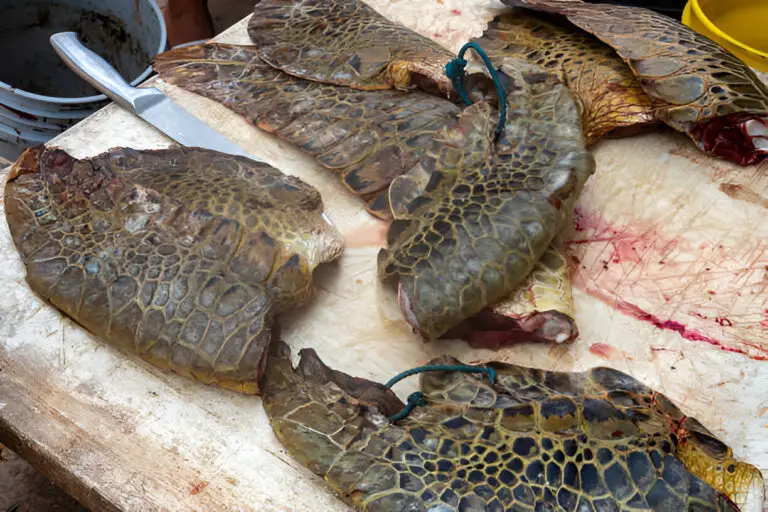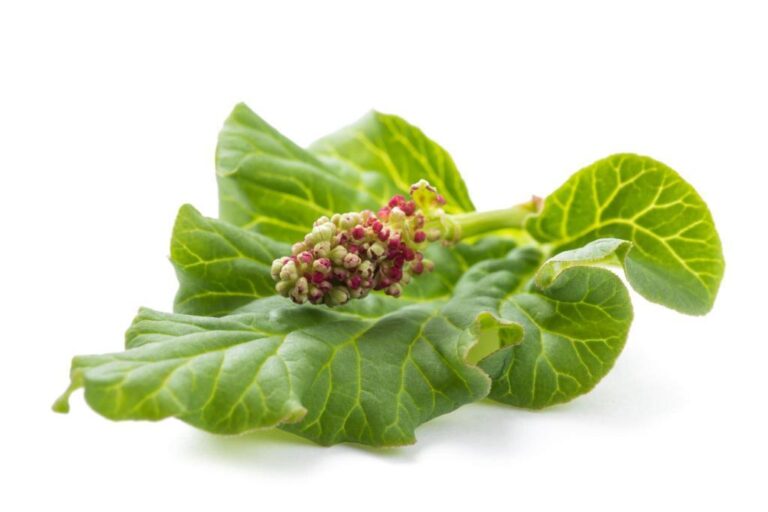Can You Eat Mandarin Skin? Are Mandarin Peels Safe to Eat?

Mandarins, those delightful little citrus fruits, have captured the hearts and taste buds of many. Their sweet and tangy flavor makes them a popular snack and ingredient in various dishes. But have you ever wondered about the mandarin peel? Can you actually eat it?
Yes, you can eat mandarin skin. Mandarin orange peels are edible and can be used in various ways. However, they have a bitter taste and tough texture, which may be difficult to digest.
In this article, we’ll explore the ins and outs of consuming mandarin peels, from their nutritional value to safety concerns and culinary possibilities.
So, if you’ve ever pondered the potential of those thin, vibrant peels, join us as we peel back the layers of knowledge to savor the truth about mandarin peels—nature’s tantalizing wrapper that might just hold a flavorful surprise.
The Mandarin’s Orange: A Brief Introduction
Before we delve into the edible appeal of mandarin peels, let’s take a moment to appreciate the fruit itself. Mandarins, scientifically known as Citrus reticulata, belong to the citrus family and are closely related to oranges. These small, easy-to-peel fruits have captured hearts worldwide with their delicate sections bursting with sweet-tangy flavor.
A typical mandarin comprises three main parts: the flesh, seeds, and peel. While the flesh is the most commonly enjoyed part, the seeds and peel also have potential uses that we’ll dive into shortly.
The magic of mandarin peels starts with their captivating aroma. When grated or dried, these peels release a fragrant symphony that can instantly transport you to a sun-drenched citrus grove. It’s this enchanting scent that often first captivates culinary enthusiasts.
Beyond their aromatic allure, mandarin peels offer a treasure trove of culinary potential. Once dried and finely ground, they transform into a versatile spice, adding a zesty, citrusy punch to rubs, marinades, and baked goods. Alternatively, infuse the peels into tomato sauces, teas, or cocktails to elevate their flavors to new heights.
Can You Eat Mandarin Skin? Are Mandarin Peels Safe to Eat?

The answer is a resounding yes, but with a few caveats. Mandarin peels are not only safe to eat but can also add a unique, zesty dimension to your culinary adventures. They’re packed with essential oils, vitamins, and fiber, making them a nutritious addition to your diet.
The key to enjoying mandarin peels is ensuring they’re free of pesticides and thoroughly cleaned. Organic or homegrown mandarins are your safest bet. You can zest or finely chop the peel to infuse your dishes with a bright, tangy kick.
Alternatively, you can candy the peel for a sweet treat or blend it into smoothies for an extra burst of flavor. Remember that while mandarin peels are edible, they can be quite bitter, so moderation is key.
Taste and Texture of Mandarin Skin
The taste and texture of mandarin skin offer a unique culinary experience that’s worth exploring. While mandarins are primarily known for their juicy, sweet-tangy flesh, the peel has distinct qualities that can add depth and flavor to your dishes.
- Taste: Mandarin skin carries a subtle bitterness that contrasts with the sweet and tangy notes of the fruit inside. This bitterness can be intriguing and enjoyable, especially when used in specific culinary applications. When candied or zested, the peel’s bitterness mellows, leaving behind a delightful citrusy flavor that pairs well with both sweet and savory dishes.
- Texture: Mandarin skin has a firmer texture compared to the juicy fruit, providing a satisfying bite. When sliced thinly or candied, it can add a pleasing crunch to desserts or salads. The peel’s texture can also vary depending on its thickness and how it’s prepared, allowing for a range of culinary possibilities.
Nutritional Value of Mandarin Peel
Mandarin peels, much like the fruit itself, boast an array of nutritional benefits. Packed with essential oils, fiber, and a medley of vitamins, these peels have the potential to be a nutritious addition to your diet. A 100-gram serving of mandarin peel contains roughly 10.6 grams of fiber, which plays a crucial role in promoting digestive health and preventing constipation.
Moreover, mandarin peels are a rich source of vitamin C, a potent antioxidant that aids in boosting the immune system, promoting healthy skin, and combating free radicals. The peels also contain vitamins such as vitamin A, which supports vision health, and various B vitamins that contribute to energy metabolism.
| Nutrient | Amount per 100g of Mandarin Peel |
| Fiber | 10.6g |
| Vitamin C | 53.2mg |
| Vitamin A | 681 IU |
| Vitamin B6 | 0.1mg |
| Folate (Vitamin B9) | 32mcg |
Health Benefits of Consuming Mandarin Peel
Consuming mandarin peel offers a plethora of health benefits, making it a valuable addition to your diet. Here’s a breakdown of the nutritional advantages that this often-overlooked part of the mandarin provides:
- Rich in Dietary Fiber: Mandarin peel is a great source of dietary fiber, which plays a crucial role in digestive health. Fiber aids in regular bowel movements, prevents constipation, and can help control blood sugar levels by slowing down the absorption of sugars from the digestive tract.
- Abundant in Antioxidants: Loaded with antioxidants such as flavonoids, mandarin peel helps combat harmful free radicals in the body. These antioxidants can reduce oxidative stress, potentially lowering the risk of chronic diseases and supporting overall well-being.
- Essential Oils: Mandarin peel contains essential oils that contribute to its delightful aroma and flavor. These oils have been used in traditional medicine for their potential to alleviate stress and anxiety, promote relaxation, and improve mood.
- Bioactive compounds: Mandarin oranges contain flavonoids and polyphenols, which have been linked to antioxidant and anti-inflammatory properties. These compounds may contribute to overall health by supporting the immune system and promoting heart health.
Safety Concerns and Allergies
While mandarin peels offer nutritional value, safety is a valid concern, particularly regarding pesticide residues. Like other citrus fruits, mandarins can be exposed to pesticides during cultivation.
To minimize potential risks, it’s advisable to wash the fruit thoroughly or opt for organic varieties when consuming the peel. This precaution helps reduce the likelihood of ingesting harmful residues while enjoying the peel’s nutritional benefits.
WARNING
While mandarin peels can offer culinary pleasures, it’s important to consider potential risks and allergies. Some individuals may experience allergic reactions or sensitivities to compounds present in the peel. If you notice any adverse symptoms after consuming mandarin peel, such as itching, swelling, or digestive discomfort, it’s advisable to consult a healthcare professional.
Mandarin Skin: Organic vs. Non-Organic
When it comes to enjoying mandarin skin, choosing between organic and non-organic varieties can make a significant difference in your overall experience. Here’s a breakdown of the key factors to consider:
1. Pesticide Residue: Organic mandarins are grown without synthetic pesticides or herbicides. This means their peels are less likely to harbor harmful pesticide residues that can linger on conventional mandarin skins. Consuming organic mandarin skin reduces the risk of ingesting these chemicals, promoting a healthier option for you and your family.
2. Wax Coatings: Non-organic mandarins are often coated with food-grade waxes to enhance their appearance and shelf life. While these waxes are considered safe, they may not align with the desire for a more natural and chemical-free food experience. Organic mandarins typically do not undergo this waxing process, allowing you to enjoy the fruit’s pure flavor and texture.
Here’s a table summarizing the key differences between organic and non-organic mandarin skins:
| Aspect | Organic Mandarin Skin | Non-Organic Mandarin Skin |
| Pesticide Residue | Reduced risk of pesticide | Higher risk of pesticide |
| residues | residues | |
| Wax Coatings | Generally not waxed | May be waxed |
| (food-grade wax) |
Culinary Uses to Make Mandarin Peel Edible
Making mandarin peel edible involves a blend of traditional and modern culinary techniques. Two popular methods include candying and zesting:
- Candying: This process involves boiling mandarin peel in sugar syrup, which not only softens the peel but also infuses it with sweetness. Candied mandarin peel can be used as a standalone treat or as a topping for desserts.
- Zesting: Zesting is the act of grating or scraping the outer layer of the peel to extract its aromatic oils and flavors. Mandarin zest adds a burst of citrusy essence to both sweet and savory dishes, making it a versatile ingredient in the kitchen.
- Blend in Smoothies: For a nutritional boost, blend a small portion of mandarin peel into your smoothies. It adds fiber and a citrusy kick.
- Flavor Enhancer: Adding finely grated peel to sauces, dressings, or marinades can lend a tangy and aromatic kick.
Whether you’re satisfying your sweet tooth with candied peel or enhancing your recipes with zested peel, these methods provide enjoyable ways to incorporate mandarin peel into your culinary adventures.
Cultural and Culinary Practices
Across various cultures, mandarin peels find their way into traditional dishes and practices:
- Chinese Cuisine: In Chinese cooking, dried mandarin peel is used as a flavorful ingredient in both savory and sweet dishes.
- Mediterranean Delicacy: In Mediterranean regions, candied mandarin peel is a beloved treat during festive seasons.
- Culinary Heritage: Some cultures incorporate mandarin peels in preserving methods, capturing the essence of the fruit for later use.
Conclusion
In conclusion, the question “Can you eat mandarin skin?” is met with a positive answer, given the right preparation and precautions. Mandarin peels are indeed safe to eat, offering a range of nutrients and potential health benefits.
While mandarin peels can offer numerous benefits, it’s essential to consume them in moderation. Some individuals may have sensitivities to citrus compounds present in the peel, which could lead to digestive discomfort. If you’re trying mandarin peels for the first time, start with small amounts and observe your body’s response.
By exploring various methods of consumption, you can tap into the culinary and nutritional potential of this often-overlooked part of the fruit. So, the next time you enjoy a juicy mandarin, consider making the most of its peel as well.
With a mindful approach to taste, texture, and culinary creativity, you can unlock the potential of this often-neglected part of the fruit. So, the next time you enjoy a juicy mandarin, consider indulging in the goodness of its peel – nature’s gift wrapped in vibrant citrusy zest.
FAQs on Benefits of Eating Citrus Peel
Can You Eat Mandarin Skin Raw?
Eating mandarin skin raw is generally not recommended due to its bitterness and tough texture.
What Are the Best Ways to Consume Mandarin Peel?
Candying, zesting, and using peel in cooking or baking are common methods to make mandarin peel edible.
Are There Any Chemicals on Mandarin Peels?
Yes, mandarin peels can have pesticide residues. Washing and using organic fruit can help minimize exposure.
Are Allergic Reactions to Mandarin Peel Common?
Allergic reactions are rare, but some individuals might experience sensitivities. Discontinue use if adverse symptoms occur.
Can You Eat Peel from Different Citrus Fruits the Same Way?
While the edibility of peels varies, the general principles apply. Some peels are more palatable than others.
Is it safe to eat mandarin skin?
Yes, it’s safe to eat mandarin skin, but opt for organic mandarins to avoid pesticide exposure. The peel contains fiber, vitamins, and antioxidants that offer health benefits.
What are some popular culinary uses for mandarin peel?
Mandarin peel can add zest to baked goods, salads, marinades, and cocktails. It can be grated for flavor or candied for a sweet touch, enhancing both savory and sweet dishes.






